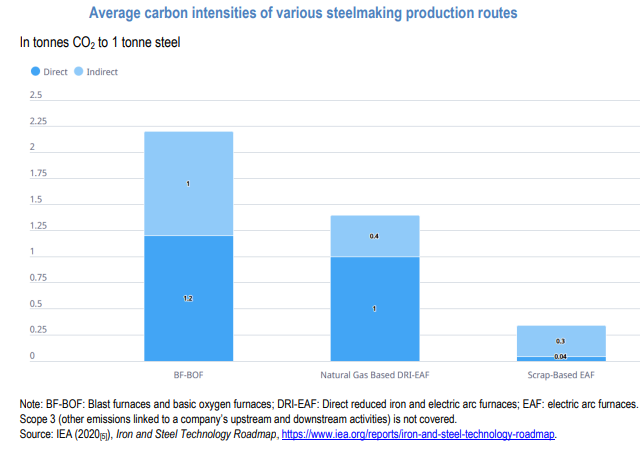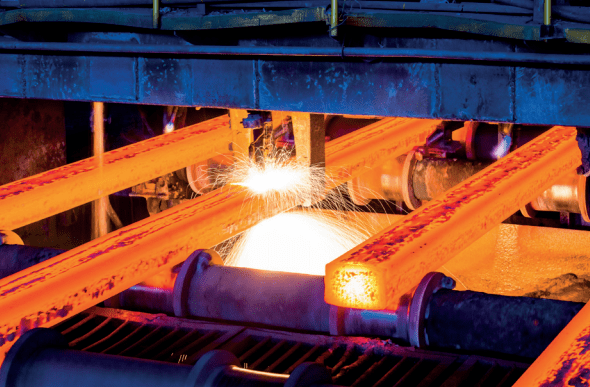Steel overcapacity and cheap steel affect more sustainable production and the green transition.
To understand this problem, it must be taken into account that there are two dominant types of production.
On the one hand, the BF-BOF (Blast Furnace-Basic Oxygen Furnace) process is the traditional method of steel production, based on the use of coal (coke), iron ore and limestone. It is more expensive than the Electric Arc Furnace (EAF) process, especially in countries with expensive energy or strict environmental regulations. It is also much more polluting, generating between 2.1 tons of carbon dioxide (CO2) per ton of steel.
Cheap steel
Globally, according to the OECD, steel produced in BOF accounts for about 70% of total production, with electric furnaces accounting for the rest. In countries such as China, BOF exceeds 90% of production. In contrast, more than 50 countries produce steel only with electric furnaces.
China accounted for 46.2% of world capacity in 2024. It reached 1,141.5 million tons. Its production model is based on blast furnaces and BOF, a carbon-intensive route. In contrast, electric furnaces, which use recycled scrap or reduced iron, emit less CO2.
In addition, China produces cheap steel. The state provides subsidies and there are fewer environmental controls. This lowers global prices. As a result, plants using BOF technology in North America, Europe and Latin America suffer losses or close down.
CO2
The iron and steel sector generates almost 8% of global CO2 emissions. It accounts for about 30% of total industrial emissions. It is one of the most polluting sectors worldwide.
Producing one ton of steel emits, on average, 1.9 tons of CO2. However, the BF-BOF process produces up to 2.3 tons. In contrast, the EAF process, which uses scrap, emits only 0.7.

Reducing these emissions is key to meeting climate targets. But the transition faces obstacles. Overcapacity and market distortions limit investment in clean technologies.
In addition, much of the new capacity still relies on carbon-intensive processes. More than 40% of projected global capacity between 2025 and 2027 will also use BF-BOF, according to the OECD.

